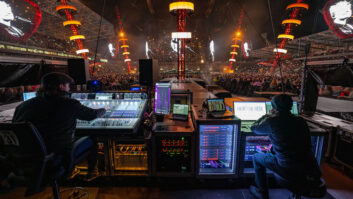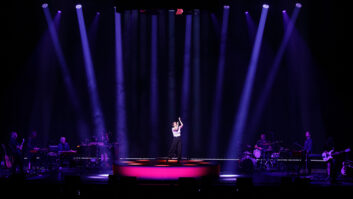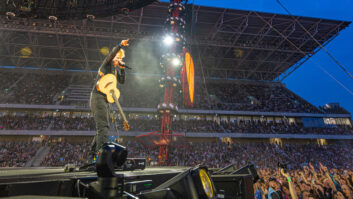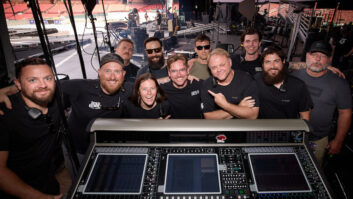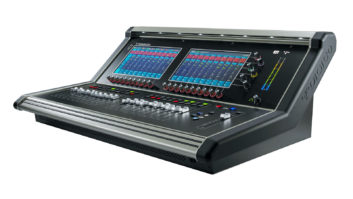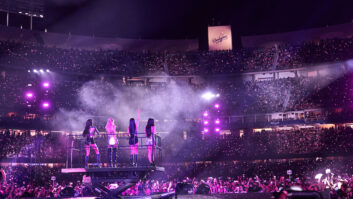New York, NY (June 15, 2016)—The US leg of Ellie Goulding’s Delirium world tour is making the rounds with audio provided by Eighth Day Sound, aiding the efforts of the singer’s FOH engineer of two and a half years, Joe Harling, and monitor engineer Mike Flaherty, who’s worked with the singer since 2013. Both are manning DiGiCo desks, with an SD5 at the FOH position and an SD7 in monitorworld.
Harling is also using two Waves SoundGrid servers with his SD5, running MultiRack externally on a Mac Mini via a DiGiGrid MGB interface. “I’m using a fair bit of nice outboard for compression and reverbs, but I still lean pretty heavily on Waves plug-ins,” he said. “I like to think of my plug-ins as 50 percent ‘utility’ and 50 percent ‘vibe.’” A second MGB interfaces to another laptop hosting Metric Halo’s SpectraFoo for RTA metering plus “weird and wonderful effects from Valhalla and Soundtoys,” he added.
Flaherty has mixed on DiGiCo desks since the beginning of 2014, initially using an SD10. “I find the dynamic EQ a very useful tool as I don’t incorporate Waves into my sessions,” he said. The console’s video input has also been convenient, he says. “That was especially useful when we were touring with a B stage. The video guys ran a show feed into the console, which helped massively when I couldn’t see Ellie at the other end of the arena.”
Harling goes heavy on the plug-ins: “The band mix on this gig is very busy and constantly changing, and Ellie’s vocal is very quiet, so I use my utility plug-ins to try and clean stuff up and make space for the vocal. I use WNS on Ellie’s vocal to get a bit more gain before feedback and reduce spill into her mic, which is especially useful if she’s on a B stage or thrust.”
Harling typically has numerous instances of C6 running, as he explains: “I use quite a lot of side-chaining—for instance, kick drum ducking the lowest band of C6 on bass guitar and synth bass; Ellie’s vocal ducking a tiny bit of mid-range out of a C6 on the band mix; acoustic snare drums ducking the transient of triggered electronic snares in C1; and triggers on the acoustic snares being used to open gates. I then use character plug-ins such as API EQs, H-EQ, CLA76, NLS, the Puig comp and EQ, and H-Delay to give me the vibey sounds.”
At monitors, Flaherty is generating stereo IEM feeds from the SD7 for 12 performers, all on in-ears—using Sennheiser EM2050 transmitters—with 22 body packs assigned. “There are five mixes for Ellie and the band, with three BGV sends. For this campaign, we have the addition of four dancers who have another mix with four cloned packs. The remaining three sends are for the playback tech, my PFL and a spare transmitter. I also run three additional sends to d&b Q-SUBs for the drummer, bassist and keyboard player.”
Eighth Day Sound
www.8thdaysound.com
DiGiCo
www.DiGiCo.biz
